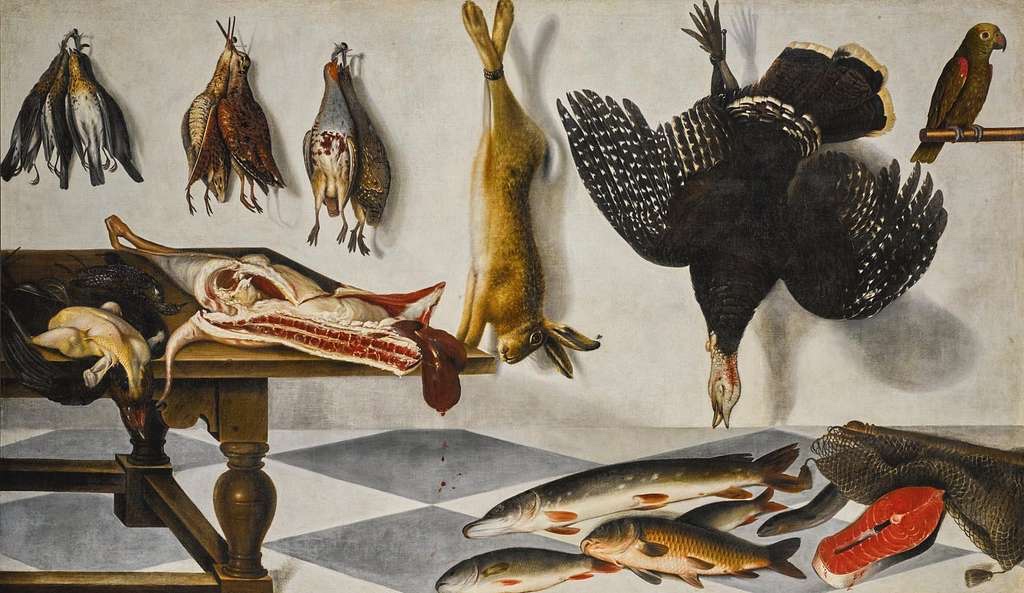
The Garde Manger or pantry chef is a term not heard so much nowadays, the position still exists within top kitchens and the Garde Manger chef is a true craftsman and Culinary specialist. He/she is responsible for all preparation and production of dishes to be served cold. The term Garde Manger is a reference to the cool area of the kitchen and storage areas.

Historically the role of the Garde Manger chef would have been a reserve of the wealthy in their stately homes, for a well stocked larder was seen as a symbol of status and high standing. Prior to modern day refrigeration and modern cooking and preserving methods the role of the Garde Manger chef was vital as their knowledge alone would preserve the seasonal food products for use throughout the year in a large pantry or larder, usually kept in the coolest part of the house which was invariably subterranean next to the wine cellars.


In today’s modern kitchen the Garde Manger role has been swallowed up into the Chef de Partie role. It still has a focus on cold food preparation but also encompasses salads, appetisers and other cold dishes. However in some of the larger traditional hotels where the brigade system still exists, the Garde Manger position exists in its true form and as such the classically trained, knowledgeable chef can create some sublime dishes which are the very essence of this noble craft.

The job of the Garde Manger chef is also to plan and prepare exquisite banquets and buffets and to undertake elaborate presentations often with a theme to celebrate or commemorate special occasions. These may have specialist ice carvings, fruit carvings or sculptures made from a special solid white veg fat made to look like marble. Sadly these labour intensive elaborate preparations are disappearing from the kitchen as they are expensive in labour and ingredients and the specialist chefs have long retired.
I was lucky enough to have just caught the last of these such events as I came into the commercial kitchen as a young chef 30 years ago. I worked at a beautiful old country house hotel in Herefordshire when I was twenty, as a sous chef in a large 10 chef brigade, I was tasked with helping the head chef plan & prepare the annual huntsman’s ball and banquet. My specific tasks were to butcher and roast the prime cuts of Beef, Pork & Duck and poach two large Wild Salmon caught from the Wye River on the estate. Even the term Huntsman is outdated today and probably would offend some.
The Beef ribs had to be prepared for carving by removing the chine bone & tying it back on for roasting, the beef was roasted rare. The whole ham legs were kept long with the aitch bone removed for ease of carving, the ducks were kept whole and roasted on a spit rotisserie. Aspic jelly was prepared by making a stock of pigs and calves feet then clarified, cooled then the fat removed. The clear jelly then used as a glaze over the meats to make them shine as if they were varnished! This method of preparation is very classical and sadly gone from today’s kitchen.

Receiving a Certificate of excellence in France for my cold presentation of a classical Pike “Brochet ” dish in Nantes.
The other preparation I was tasked with for the banquet was poaching the two whole wild salmon for cold presentation. I put two ramekins in each fish kettle to bend the fish to look like it was swimming. They were then cooked,cooled then presented on two large 6 foot by 3 foot mirrors which were decorated with herbs and Samphire grass to look like reeds on a river bed, a keep net and rod were used to set the scene. I’m only sorry we didn’t have phone cameras back then so I didn’t get any pictures. The sculptures that were made by the pastry chef were truly astounding, a huntsman’s head complete with eyepiece, a horse’s head, a fox’s head and the head of two hounds all beautifully carved and sculpted from white solid fat, the dessert table and fruit carving were stunning. A display of langoustines presented on a hand carved ice bowl with rose petals set into the ice and little torches angled like little spot lights drew gasps from the guests, I’ve never seen anything of the kind before or since. The banquet was for 300 people.
Nowadays these things are distant memories of a bygone era. Now I get to flex my skills as a Garde Manger in the kitchen of the Penycae Inn, I prepare beautiful pates and terrines and plates of amuse bouche for functions and help display buffets, whilst regaling to the chefs about my stories in yesterday’s kitchens. Making a good pate or terrine is a noble pursuit and I implore any enthusiastic home cook or young chef to learn to make and master this skill, it teaches you how to season properly and you must have a good palate to get this just right, these precise techniques of using subtle aromats and spices blended together to compliment but not overpower the meats is a crucial skill of the Garde Manger chef.



The art of curing and preserving meat was also an integral part of the Garde Manger chef role, I have studded the craft of preserving meat for many years and you can read more about this on the link below
